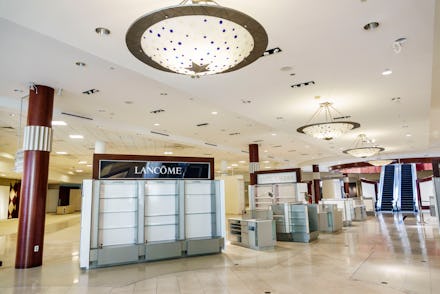Amazon is looking to use empty malls as warehouse space

Shopping malls are facing an existential predicament. Even before the coronavirus pandemic made in-person browsing a health hazard, a deluge of retail giants like JCPenney, Sears, Lord & Taylor, and Neiman Marcus declared bankruptcy, unable to compete with the convenience of ecommerce. With so many department stores now shuttered, landlords have to figure out what to do with all that empty space. Now, the largest mall owner in the U.S. is reportedly thinking about leasing vacant department stores to retail’s biggest disruptor: Amazon.
According to the Wall Street Journal, Simon Property Group Inc. is in talks with the ecommerce giant to turn some anchor department stores into Amazon distribution hubs. Malls offer lots of logistical advantages for the online vendor: they’re typically close to highways and residential areas, meaning a distribution hub in an old JCPenney store could speed up the last leg of delivery to consumers in the suburbs. But surrendering prime mall space to Amazon also marks the end of their traditional business model, which relies on anchor stores to draw traffic to the rest of a property’s shops and restaurants.
Since smaller mall tenants lean on department stores to drive shoppers to their shelves, many of them have clauses that allow them to break their leases if an anchor space stands vacant. An Amazon warehouse wouldn’t drive much foot traffic, though employees could theoretically eat and shop at the mall, so landlords would rather swap department stores with gathering spaces like theaters, gyms, and grocery stores. But thanks to covid-19, many of these businesses are now struggling, too.
Amazon, on the other hand, reported its best quarter ever during the pandemic. “To replace department stores, mall owners considered schools, medical offices and senior living,” Camille Renshaw, chief executive officer of B+E, a real-estate investment brokerage firm, told the WSJ. “With the current pandemic, industrial is the only thing left now.”
That’s the moral of the story, in the end. Coronavirus has indelibly changed the way people gather, shop, and entertain themselves. The decline of malls and rise of online retail isn’t a new trend, but changes that were otherwise unfolding gradually are now in hyper drive. It’s hard to say when it’ll feel safe to step foot in a mall again, but when the pandemic finally abates, shopping will likely look and feel markedly different.